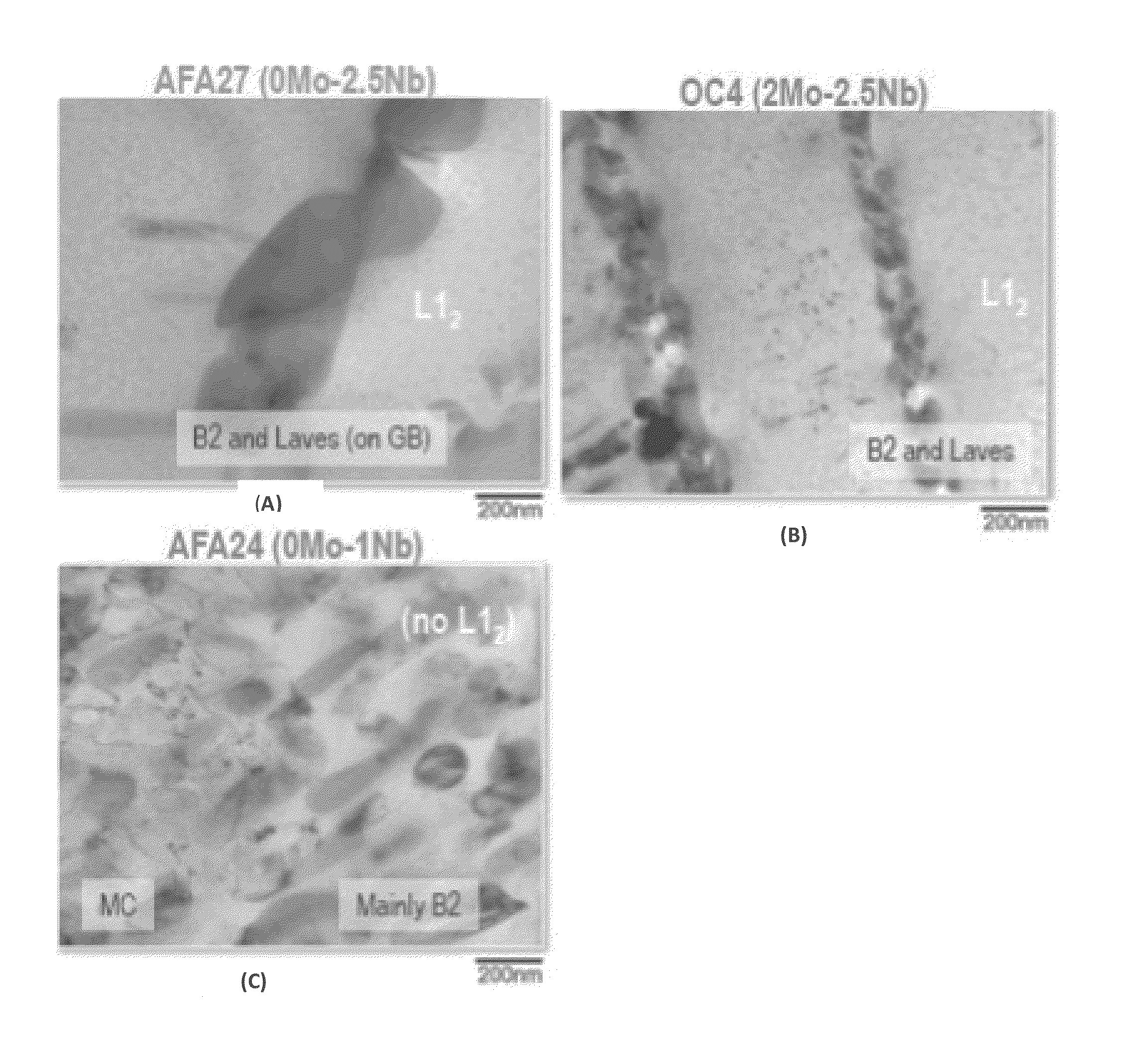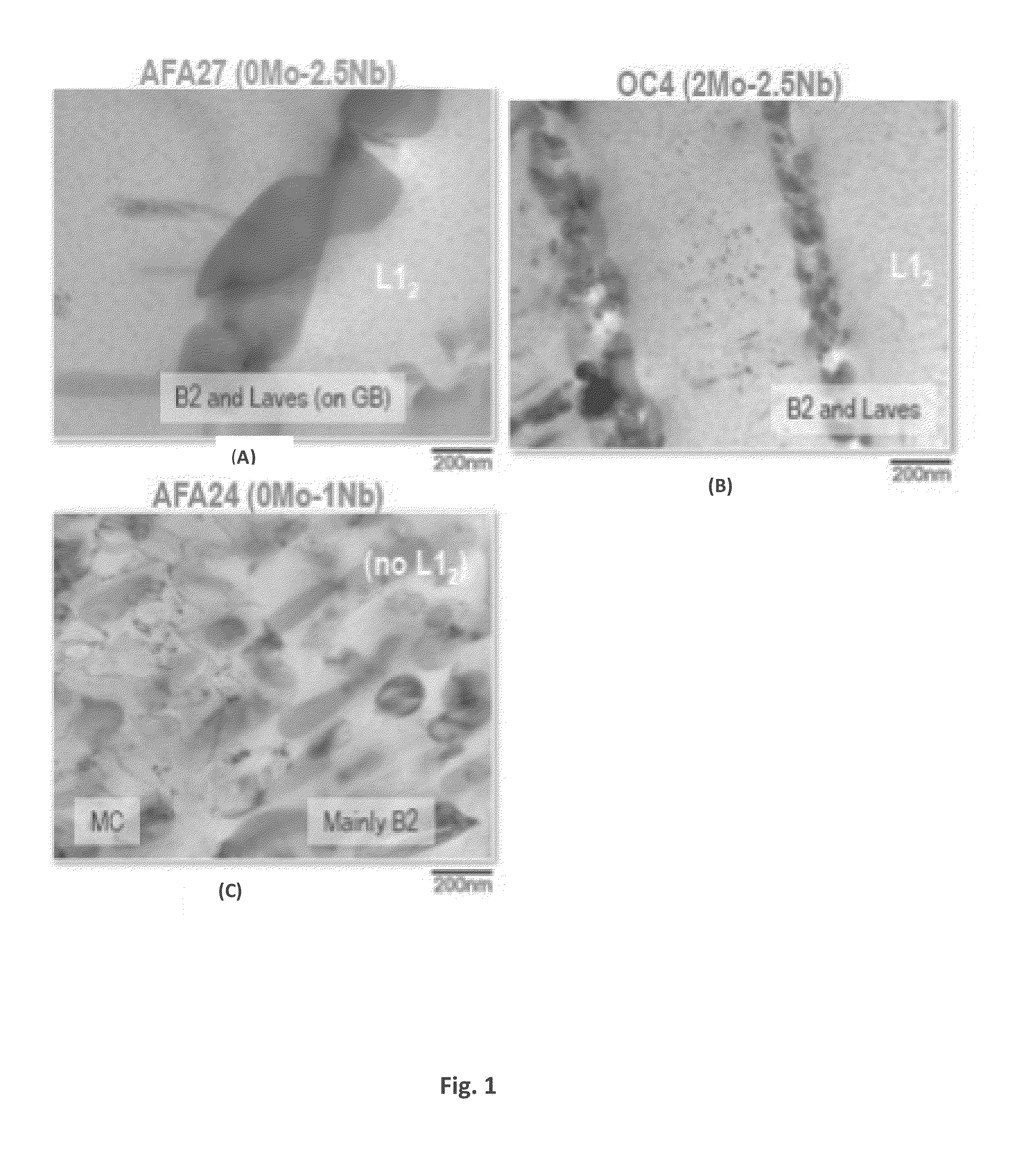Alumina Forming Iron Base Superalloy
a technology of iron base and superalloy, which is applied in the field of austenitic stainless steel alloys, can solve the problems of increasing less desirable, affecting the quality of steel alloys,
- Summary
- Abstract
- Description
- Claims
- Application Information
AI Technical Summary
Benefits of technology
Problems solved by technology
Method used
Image
Examples
Embodiment Construction
[0021]The invention provides a new class of alumina-forming austenitic (AFA) Fe-based superalloy, which uses γ′—Ni3Al phase to achieve creep strength. Coherent precipitates of γ′—Ni3Al and related phases are well established as the basis for strengthening of Ni-base superalloys, which are among the strongest known classes of heat-resistant alloys. The use of γ′—Ni3Al in AFA offers the potential for greater creep strengthening and the opportunity to precipitate-harden the AFA alloys for improved high-temperature tensile strength.
[0022]An austenitic stainless steel alloy, consists essentially of, in weight percent 2.5 to 4 Al; 25 to 35 Ni; 12 to 19 Cr; at least 1, up to 4 total of at least one element selected from the group consisting of Nb and Ta; 0.5 to 3 Ti; less than 0.5 V; 0.1 to 1 of at least one element selected from the group consisting of Zr and Hf; 0.03 to 0.2 C; 0.005 to 0.1 B; and base Fe. The invention can include any combination of maximum and minimum weight percentages...
PUM
| Property | Measurement | Unit |
|---|---|---|
| Temperature | aaaaa | aaaaa |
| Percent by mass | aaaaa | aaaaa |
| Pressure | aaaaa | aaaaa |
Abstract
Description
Claims
Application Information
 Login to View More
Login to View More - R&D
- Intellectual Property
- Life Sciences
- Materials
- Tech Scout
- Unparalleled Data Quality
- Higher Quality Content
- 60% Fewer Hallucinations
Browse by: Latest US Patents, China's latest patents, Technical Efficacy Thesaurus, Application Domain, Technology Topic, Popular Technical Reports.
© 2025 PatSnap. All rights reserved.Legal|Privacy policy|Modern Slavery Act Transparency Statement|Sitemap|About US| Contact US: help@patsnap.com



